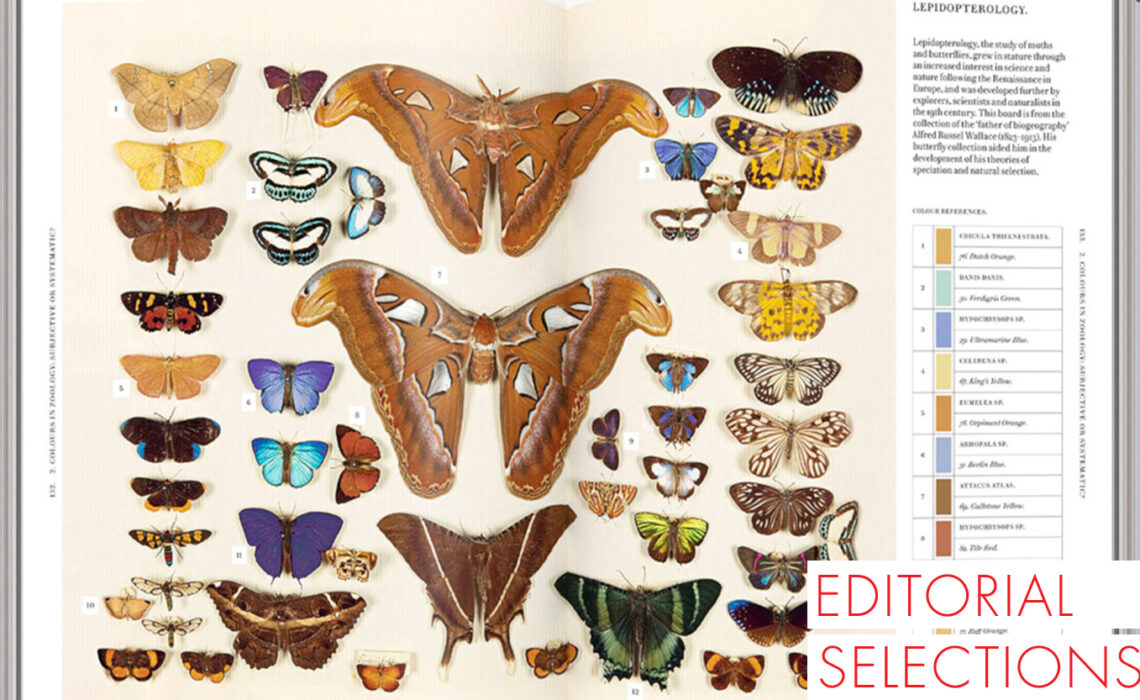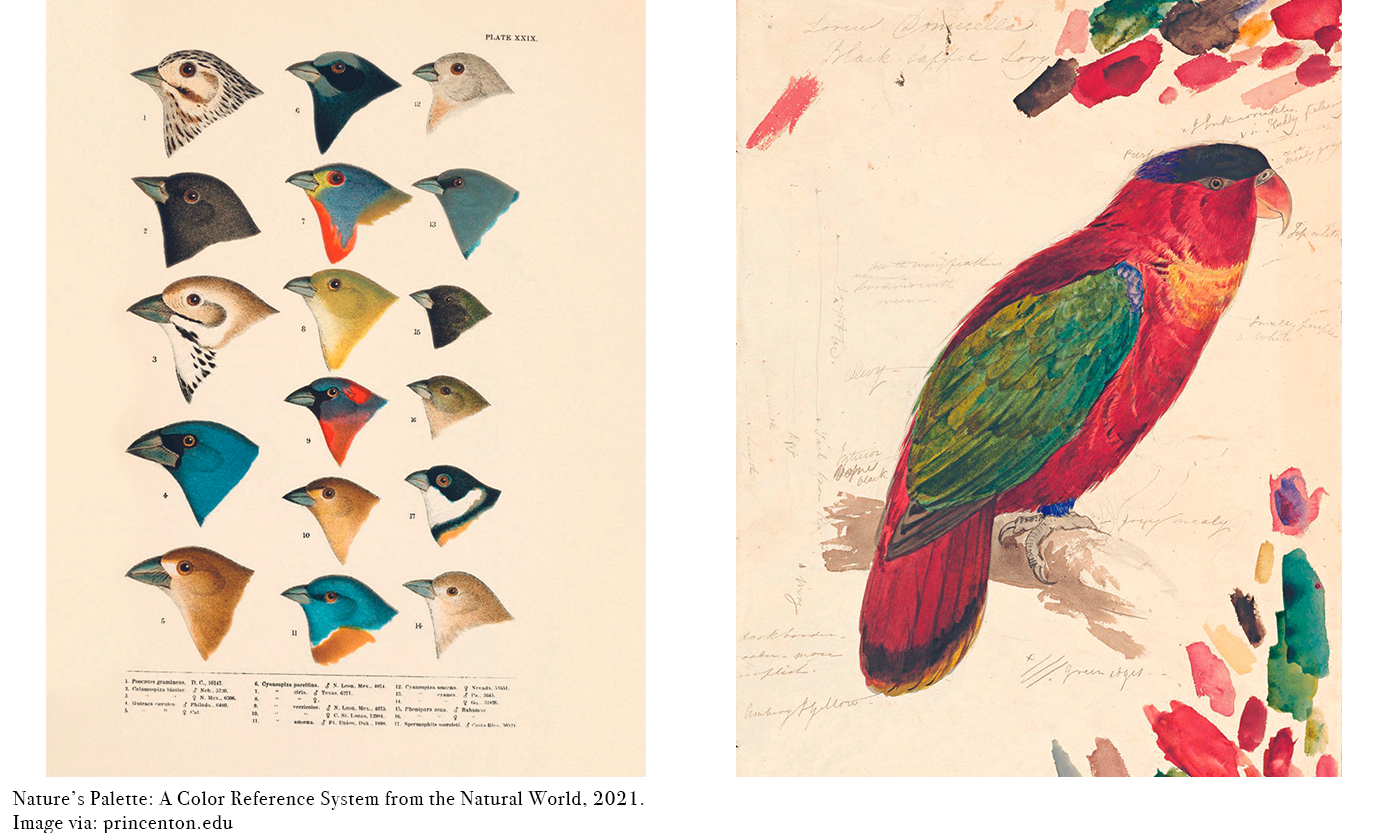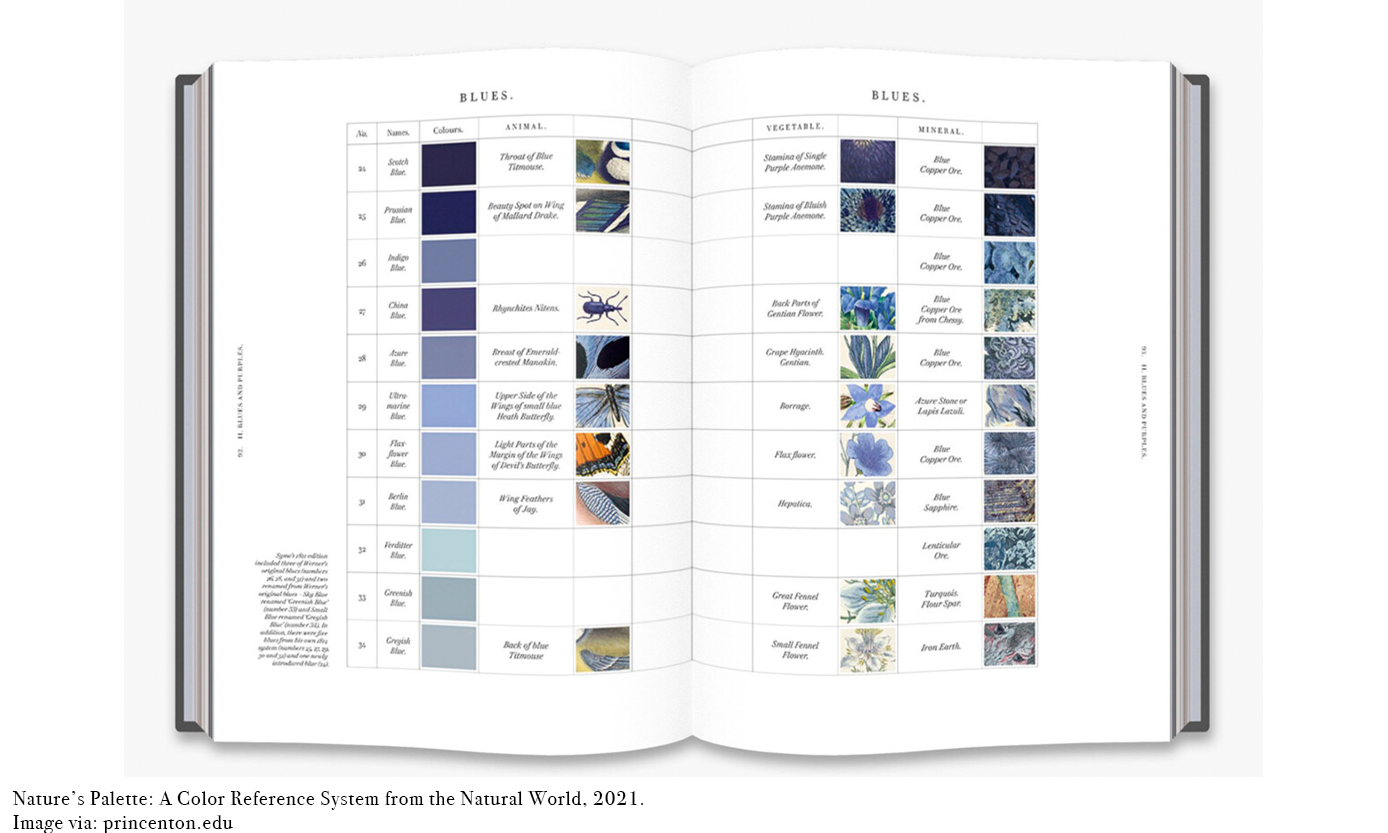
Nature’s Palette: A Color Reference System from the Natural World
By Sybaris
How many colors are there in nature? Are all the colors are natural? Such as time and space, color is one of the most interesting concepts and elements art and sciences are obssesed with. 200 years after the release of an extende version of the chromatic catalog Nature’s Palette: A Color Reference System from the Natural World, Princeton University Press is presenting a version with new contributions and illustrations.
In 1814 German geologist Abraham Gottlob Werner published a guide taxonomically organized of the colors based in the natural world. Seven years later, the book was expanded and enhanced in 1821 by painter Patrick Syme, who added color swatches and further color descriptions, bringing the total number of classified hues to 110.
This chromatic catalogue of the natural world pairs individual colour swatches with examples from the animal, vegetable and mineral kingdoms to create a beautiful and comprehensive colour reference system to grace every bookshelf.
Marking the 200th anniversary of the publication of Syme’s expanded edition of Werner’s Nomenclature of Colours (1821), this lavish volume takes Syme’s field guide of 110 standard colours and – for the first time – fully illustrates it with nineteenth-century depictions of his referenced species. Expert text explains the uses and development of colour standards in relation to zoology, botany, minerology and anatomy, while specimens from contemporary collector’s cabinets (birds, butterflies, eggs, flowers and minerals) are matched to each colour swatch. Syme’s groundbreaking guide attempted to establish a universal colour reference system to help identify, classify and represent species from the natural world: this landmark publication completes his endeavour.
The 2021 includes contributions by leading natural history experts and more than 1,000 color illustrations. The book is available for download for academics and studends through the website jst.org.





